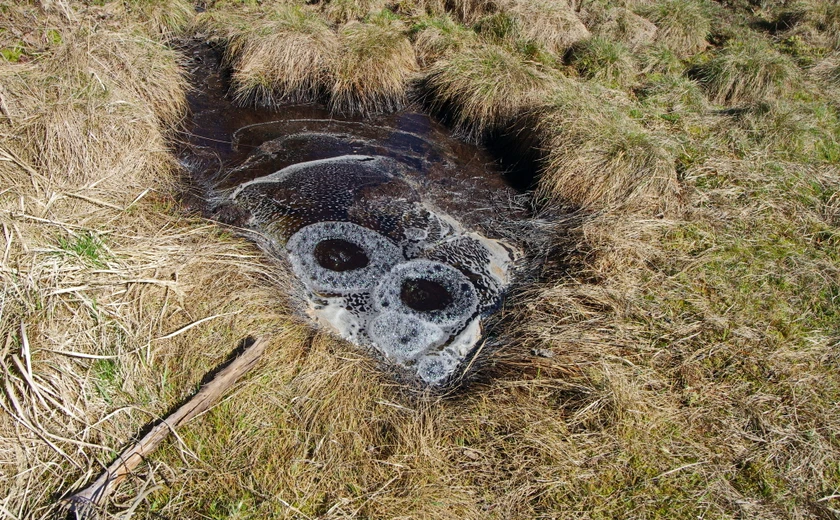The Sulphurous One - Sirňák
White foamy crusts decorate several smaller water surfaces of grass-grown glades on the right bank of the Teplá River.
This is where one of the last remnants of the once-powerful volcanic activity, sulphurous carbonous emanations gushing from the visca of the earth to its surface, has created characteristic mud craters. Several emergences and mineralizations can be seen directly in the Teplá River bed.
Basic Information | |
Category | Přírodní památka |
Altitude | 698 m n.m. |
Extent of specially protected area | 2.86 hectares |
Border length | 1300 m |
Geology
The entire area of the protected area is abundant with aluminous and sand-clay slope sediments and fragments with occasional larger boulders from Podhorní Hill. According to geologic maps, amphibolites can be found beneath the soil here. There is a group of mofette in the central area of the territory, dry sulphurous discharges, grouped in a belt about 100-120 meters long and 4-10 meters wide. A larger part of the gaseous discharges are concentrated in three shallow depressions filled with clear water with fluctuating levels, as shown by the precipitated white coating of salt minerals. The entire mofette field represents a very extensive lowland area with partial peat bog soil structure.
Flora
A minor peat bog formed around mofette decorated with peat moss as well as Eriphorum vaginatum and Eriophorum angustifolium. The alderwood in the alluvia of the Teplá River provides an abundant amount of Aconitum vulparia.
Fauna
There is a normal occurrence of forest animal species on a relatively small territory. The more interesting species worth mention are the northern raven, while the burbot can be found in the Teplá River.
Forestry
Part of the area, with the best-developed mofette, is covered by a scattered spruce monoculture, while the rest is grown over by Stellario-Alnetum. The renewal of forest growth is a priority at present.




